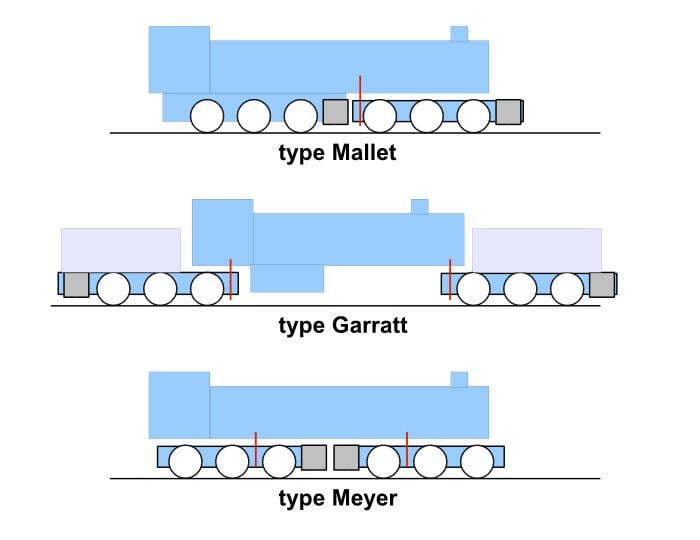 | ||
The term "articulated locomotive" usually means a steam locomotive with one or more engine units which can move independent of the main frame. This is done to allow a longer locomotive to negotiate tighter curves. Articulated locomotives are generally used either on lines with extreme curvature—logging, industrial, or mountain railways, for example—or to allow very large locomotives to run on railways with regular track curvature. Articulation is also applied to some electric locomotives, such as the Italian FS Class E656.
Contents
Usage
Articulated locomotives saw service in many nations, but were very popular on narrow-gauge railways in Europe and saw their greatest size developed in the United States, where the Union Pacific Big Boy 4-8-8-4s and the Allegheny H-8 2-6-6-6s were some of the largest steam locomotives ever built.
Many different schemes for articulation were developed over the years. Of these, the Mallet locomotive and its simple-expansion derivative were the most popular, followed by the Garratt type (mostly built in the United Kingdom, popular throughout Europe, Africa and European colonies), and the various geared steam locomotive types, the latter largely used in logging, mining and industry. Most other types saw only limited success.
Major types
The major types of articulated locomotive are as follows:
Simple expansion
Simple expansion, or simple, articulated steam engines had two sets of equally sized cylinders. When the steam was used in the firebox, the high pressure and low pressure came out the smokestack at once, resulting in higher tractive effort at the cost of more fuel burnt.
Compound expansion
Compound expansion, or compound, articulated steam engines like Anatole Mallet's original idea, consist of two sets of unequally sized cylinders. The smaller pair of cylinders near the cab was fed with high pressure steam directly from the boiler and then the steam was passed into a pair of low-pressure cylinders at the front, with larger diameter to offset the lower pressure, before exhausting through the smokestack. This, however, resulted in lower tractive effort because of its low efficiency.
Geared types
There were various types of articulated geared steam locomotive, including:
Other types
Electric locomotives
There are several classes of articulated electric locomotives of generally two types:
Electric and diesel bogie locomotives have many construction aspects in common with Meyer type steam locomotives but are not seen as articulated.
